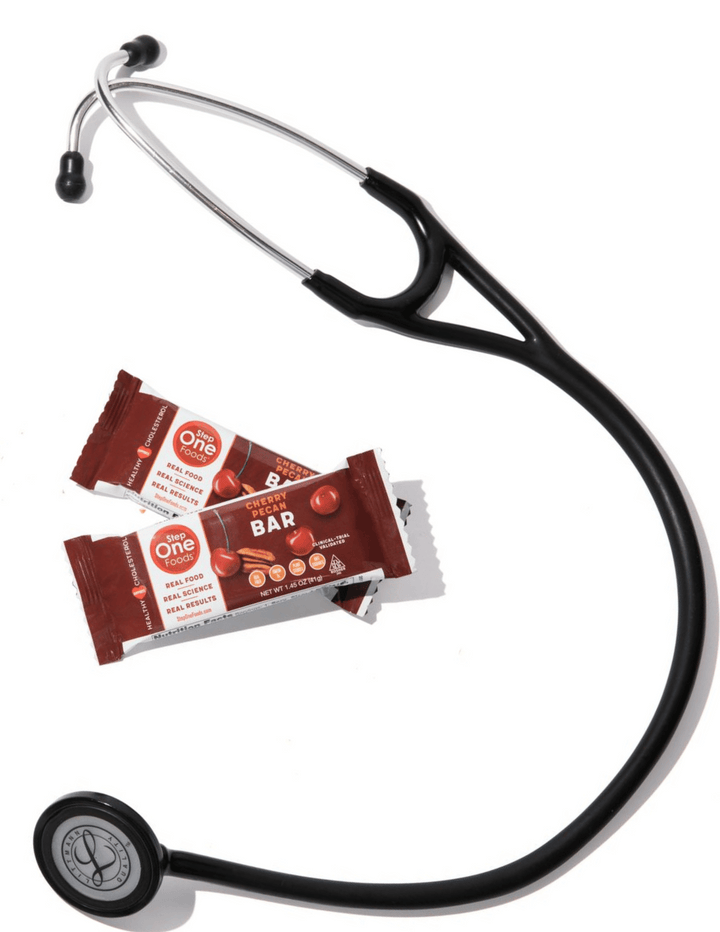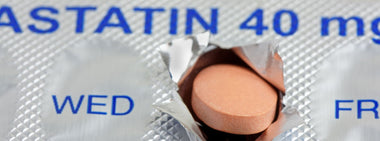The Origin of the Step One Name

Back in 2001, the National Institutes of Health convened a panel of experts to develop treatment guidelines for patients with high cholesterol. Step ONE of their recommendations? Try diet first. Only if that didn’t work, the recommendations continued, should you turn to medications such as statins.
But what the guidelines didn’t take into account was how unprepared physicians were to give dietary advice, having received no training in it. So they often defaulted to simply telling patients to "Eat better" without providing any step-by-step information on how to achieve that. No surprise, patients failed that diet-first approach time after time, after time.
What I noticed back then was that my waiting room never seemed to change. Full of people who looked great on paper with all their “numbers” at goal, but back in my office because they still didn’t feel well. If anything I was seeing more and more people who were complaining of side effects from all the drugs I had put them on. It was a never-ending revolving door of follow-up visits. But I had gone to medical school to learn how to cure people! Something was just not adding up.
Now, as a cardiologist, I’m far down the care stream, so patients have typically seen many health care providers before they see me. Justifiably, I had assumed every one of my colleagues was following the guidelines and thoughtfully counseling patients on nutrition and that I was seeing the individuals who had failed diet and now required advanced medical care.
Boy was I wrong!
Turns out, given all the repeat failures with the diet-first approach, physicians had quietly abandoned step one in care and began going straight to drugs.
When I finally started asking patients about what they ate, I learned that I was the very first physician to even inquire! This was shocking. Not only were providers not giving diet a chance, they weren't even bothering to see if what their patients were doing might be counterproductive.
As I recounted in my first blog of this series, by this point big food companies had been churning out products that were becoming progressively less healthful…for years. And now I had discovered that doctors had been turning a blind eye to diet and just covering up the effects of those foods with a bunch of pills...for years.
This was crazy – and yet explained everything! A glaring gap in care that no one was fixing. So I thought, why not me?
First I went on an education crusade – for myself and for my patients. I learned what foods were especially powerful in impacting heart health and cholesterol levels. And I didn’t just hand out pamphlets or kale recipes. I engaged in one-on-one in-depth nutrition counseling. The patients that took my advice to heart? It was transformational. Medications lists shrank. Diagnoses melted away. Patients literally became non-patients. It was the first time I was effecting cures!
The problem? I could count all those successes on one hand. The vast majority of my patients couldn’t do it. They’d come back deflated saying it was too hard and took too much time. They needed the convenience of the foods they were buying. And then asked me to just put them on the drugs.
What this experience taught me was that the solution was correct – change the food – it’s just that the tools were wrong.
So I started tinkering with my Fibré and modified the formula to include only those ingredients that had been extensively documented to be cholesterol-lowering and/or heart health-promoting. That sounds waaay simpler that it was! But I remained undeterred. And my thought was if I could just get people to improve their diet a little bit, maybe I could at least get them started on the right path. Several years of formulation work later, Fibré became Anytime Sprinkle. And the line expanded to include all of the products you see today.
We named them Step One Foods to honor the fact that improving diet is supposed to the first step in care. And we decided to make them available only online so that instead of putting money into incentivizing grocery stores to carry our products, we could put money into where it should be spent – on superior ingredients.
And then...the phone started ringing.
“You won’t believe what happened,” the callers said. “My cholesterol has never been this low.”
Next week, in Part 3 of this series, I’ll recount the trials and tribulations of...performing a clinical trial. But before I sign off this week, I would be remiss if I didn’t mention that since that 2001 document, subsequent cholesterol management guidelines eventually gave up on patients altogether, with progressively less and less emphasis on diet and more and more emphasis on drugs. The latest cholesterol guideline is 120 pages long. The section devoted to nutrition? 1 paragraph. The medical community can - should, must - do better than this.
So here's my promise - Step One Foods will never give up on you. Because your health is our mission.
This blog is part two of a three-part story of the history of Step One. We share this story because we want you to know how dedicated we are to improving your health. Read part 1 here and part 3 here.

Tested & Proven Results.
- Cardiologist formulated
- Supported by over 500 publications
- Clinically-proven, in a double-blind randomized trial with Mayo Clinic and The University of Manitoba
80% of participants lowered their cholesterol in just 30 days. With just two servings per day, Step One Foods offers a proven-effective way to naturally lower LDL (bad) cholesterol.
Get heart health tips and articles like this, delivered right to your email.
New articles every week.
You may also like...

Insulin Resistance, Prediabetes and Type 2 Diabetes. Part 1: Defining the Problem

The 95% Problem: Is Your Doctor Missing the Fastest Way to Lower Cholesterol?

You don’t need to avoid foods with cholesterol…except for these


